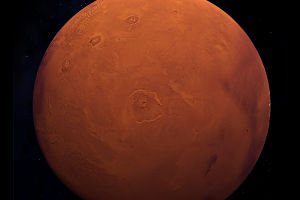The term "supermoon" was coined by American astrologer Richard Noelle in 1979 and refers to a phenomenon in which the moon is located near its perigee (closest point to Earth in its orbit) during a new or full moon phase.
A new moon that occurs at the exact time of perigee is called a "super new moon," while a full moon that occurs at the exact time of perigee is called a "super full moon."
The difference in distance between the Moon and Earth during the perigee and apogee (farthest point from Earth in its orbit) can cause the moon to appear 14% larger and 30% brighter during a supermoon, but this change is not always easily perceptible to the human eye.
While many mainstream astronomers do not use the term "supermoon," it is a popular term among astrologers and the general public. The best time to observe a supermoon is when it is just rising or setting, as the illusion of the moon appearing larger due to its position on the horizon can be more dramatic.
Additionally, it is worth noting that while the term "supermoon" is primarily used to refer to the full moon phase, it can also be applied to the new moon phase.
However, during a new moon, the moon is not visible as it is located between the sun and Earth, and therefore not visible to observers on Earth.
The term supermoon is a popular term but not a scientific term. The scientific term used to describe this phenomenon is "Perigee Syzygy of the Earth-Moon-Sun system", meaning a new or full moon that occurs when the moon is at or near its closest approach to Earth in its elliptical orbit.
The supermoon events are not rare, in fact, it occurs about every 13 months. The next supermoon event that can be observed is in the next month. It is a good opportunity for astronomers and the general public to observe the Moon closely and appreciate its beauty.
It's also important to note that the effect of the supermoon on tides is minimal, and should not be confused with the king tides, which are caused by the alignment of the sun, moon, and earth.
In conclusion, the term "supermoon" refers to a phenomenon in which the moon is located near its perigee during a new or full moon phase, causing it to appear slightly larger and brighter in the night sky.
While the term is not commonly used by mainstream astronomers, it is a popular term among astrologers and the general public. Observing a supermoon at its rising or setting time can be a great opportunity to appreciate the beauty of the Moon.


